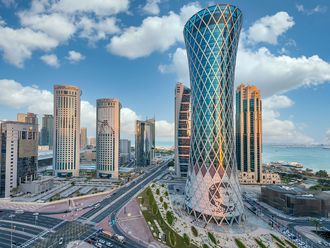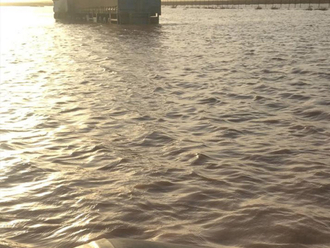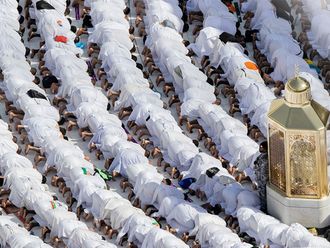Manama: Artwork depicting the evolution of Qatari art from mid-1960s to early 2000, is now on display at the Mathaf: Arab Museum of Modern Art in Doha.
The exhibition "Sawalif: Qatari Art Between Memory and Modernity" narrates the perceptions and vision of 23 artists about the changing Qatari society, landscape and lifestyles.
According to museum officials, ‘Sawalif' presents the rarest among the rare artworks in the country. The oldest work is "The Bisht Maker" (1965) by Abdul Wahed Al Mawlawi, while, ‘Saqr' (2006), by Shaikh Hassan Bin Mohammad Al Thani, vice- chairperson of Qatar Museums Authority and Mathaf's patron, is the newest.
The work was presented during the 2006 Asian Games held in Doha and the collection is open for public viewing until October 29.
"The unveiling of the collection on the 14th night of the Holy Month of Ramadan, which is a very important occasion and special for Muslims, marks the relevance of the latest exhibition of Mathaf," Yusuf Ahmad, senior curatorial advisor of the expo, said.
"The event provides a link between the memories of Qatar of yore and its evolution into modernity. There is a story behind every artwork on display at this expo. This event recognises the artistry of Qatar and the future of the Qatari art scene," he said, quoted by Qatari daily Qatar Tribune.
According to Fatima Mostafawi, an assistant curator of the expo, ‘Sawalif' aims to inspire and provide a venue for fruitful discussions on Qatari culture and art among locals and guests.
‘Sawalif' means informal, friendly conversation and stories," she said. "This event is a good opportunity for visitors to celebrate Qatari art in an international context. The collection provides a glimpse of what has been achieved by Qatari artists and what they can achieve in the future."
The artworks housed in the three galleries of Mathaf.
The first gallery features collection from mid-60s to 70s and includes the works of Jassim Zaini, one of the first Qatari artists the government sent abroad for art training. He was one of the few artists who witnessed and documented the social and economic transformation of Qatar during the 1950s and 1960s, after the discovery of oil. It also features the four paintings on Ramadan by Sultan al Sulaiti, a founding member of the Qatar Fine Arts Society, and two of the works of Majid Hilal Al Naimi.
The second gallery illustrates the versatility of the Qatari artists from 1980s to early 1990s and includes the works of Yusuf Ahmad, including his two paintings depicting his reaction to the ethnic cleansing at Sarajevo, ‘Screams of Sarajevo'.
A ceramic work by Ahmad Al Haddad is also on display. According to Mostafawi, the odd-shaped ceramic was intended to be made into a cup-like object but since it was the artist's first time to use a Qatari mud he ‘overcooked' his work. Also in the gallery are the works of Ali Hassan, a Qatari calligrapher. "It was in 1990s that printing was introduced in Qatar. Ali Hassan's works depict this development," Mostafawi said,
The third gallery presents the country's finest collection from late 1990s to early 2000. Aside from the large-sized paintings of mixed media, the centre of attraction in the last part of the expo is the work of Shaikh Hassan Bin Mohammad Bin Ali Al Thani titled ‘Saqr', a falcon-inspired dress.












